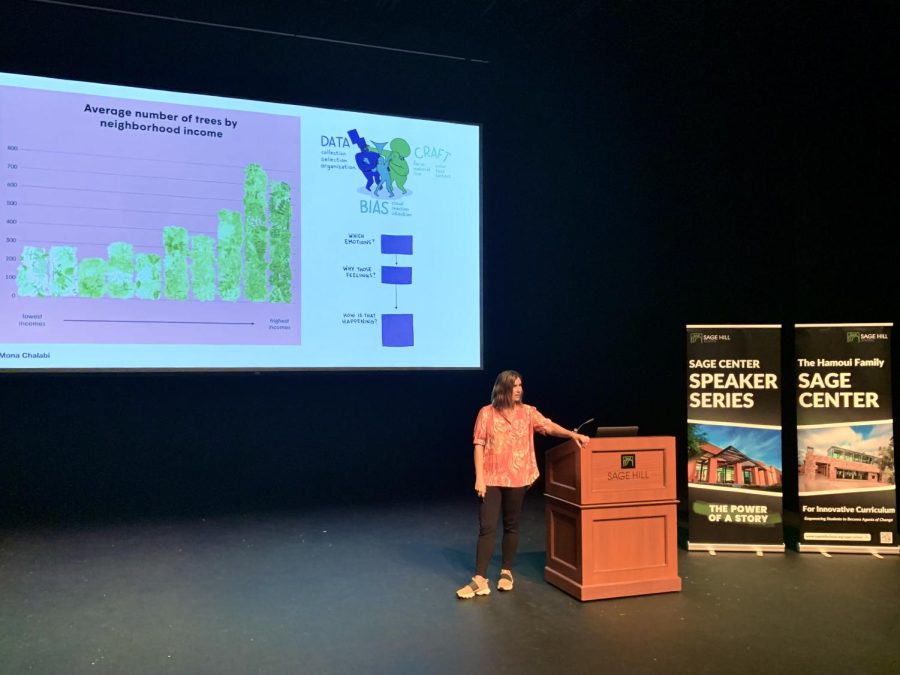Sage Center Speaker Series: Carissa Carter – How to Speak Map
October 30, 2022
“So what exactly defines a map?”
Several hands went up around the Black Box Theater. “Spatial representation of a relationship,” someone from the right corner answered. In the back, another voice piped up, “Something presented in a deliberately organized manner.”
On the podium, Carissa Carter looked up from her notes and gave a nod of approval. “Let’s take a look at some examples and decide whether or not they’re maps before settling on a concrete definition, shall we?” Several slides flicked across the screen: a pie chart, a photograph, a story, a globe, a drawing. The audience murmured along: a “yes, it’s a map,” or a “no, it isn’t,” to each display, and occasionally small arguments would emerge when the slide displayed something ambiguous. Finally, the presentation settled on a bolded definition: Maps – information that’s sorted spatially and depicted (even slightly) visually, often to focus on different aspects of a dataset.
Carissa Carter is the first of three speakers scheduled to visit Sage Hill as part of the Sage Center Speaker Series, and her presentation was all about maps, covering a variety of mapmaking topics such as types of maps, crafting maps, gathering data, and fighting bias. The current Academic Director at the d.school (which is short for the Hasso Plattner Institute of Design at Stanford), Carissa Carter hadn’t always been a designer or a mapmaker; in fact, she started off as a geomorphologist, studying bedforms and subglacial deposits. Over time, she found her true passion lay in mapmaking and designing. In 2011, she founded Parallel Design Labs LLC, helping other companies design, innovate, and implement plans. She joined the d.school in 2014, where she continues to work with students to this day, teaching courses on maps, data, and design.
After the presentation, sophomore Haley Li said, “In general, tonight was very fun and engaging. I especially liked the activity where [Carissa] called down 10 volunteers and had us organize ourselves by our shoes. [Claire Sueyoshi ‘25] and I kept breaking the systems everyone else came up with ‘cause our shoes were just too unique.”
When asked what she took away from the presentation, Haley said, “Well, the key points were all things I’ve known before already. But even if I didn’t learn anything in particular… [it] was still a good experience.”
Carissa Carter’s book, a Stanford d.school guide called The Secret Language of Maps, expands on the topics covered in the presentation, and copies can currently be found in the library.


